“URBAN
LIFE”
ANNOUNCING THE WINNERS
“A city is more than a place in space. It is a drama in time.” – Patrick Geddes
We’re delighted to present the results of our March 2021 competition judged by conceptual documentary photographer Martin Roemers.
For this competition we asked you to share images that say something about our urban existence – life in the cities, complex and ever-changing, that more than half of the world’s population now occupy. And from Lagos to London, New York to Yangon through candid and conceptual work touching on themes of regeneration, religion, play, lockdowns, homelessness and many more, the resulting selection of winning images paints a vivid picture of urban life today. Beauty, desolation, and everything in between. We invite you to absorb these dramas in time…
Congratulations to the selected photographers, and thank you to everyone who submitted. You can join the discussion on Facebook and Instagram.
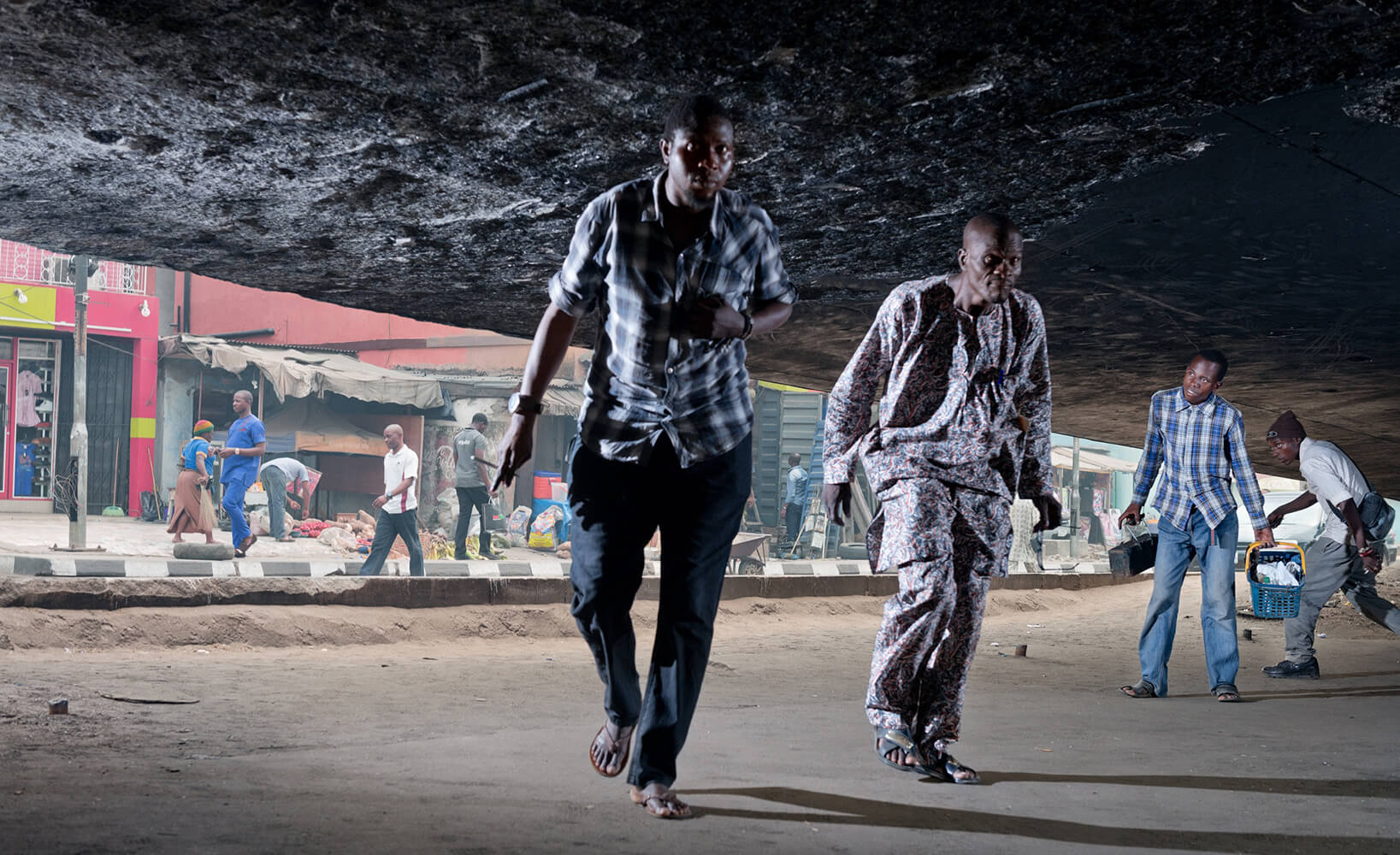
“This is an intriguing image of what appears to be men under an overpass. Their alert expressions, along with the forward motion in their postures (bending so as not to bump their heads) and the lightfall makes it feel like a still from a movie. It’s a great example of a decisive moment – perfect timing with everything falling into its right place.” – Martin Roemers
Photographer statement – From the series Out of Place. “In 2011, I started a photographic project based on the rise of the Urban Millennium. My aim was to capture the consequences of population density on the behaviour of city dwellers. By the end of 2018, I had photographed in New York, Sao Paulo, Seoul, Mumbai, Hong Kong, London, Lagos, Istanbul and Mexico City. In each of those cities I worked for at least one month – walking the streets every day from sunrise till sunset.
Its subject matter seems more relevant than ever: during a lockdown, cities are not attractive environments any more. Streets are no longer places of engagement and people seem even more alienated from each other. Passing a stranger in the street has become an awkward choreography. This crisis makes us rethink the city; considering new demographic possibilities. In many cities around the world, life has brought to a halt. Suddenly, the so called “progress” is set to pause-mode. The series emphasises this frozen movement with the use of flashlights in combination with fast shutter speeds.”
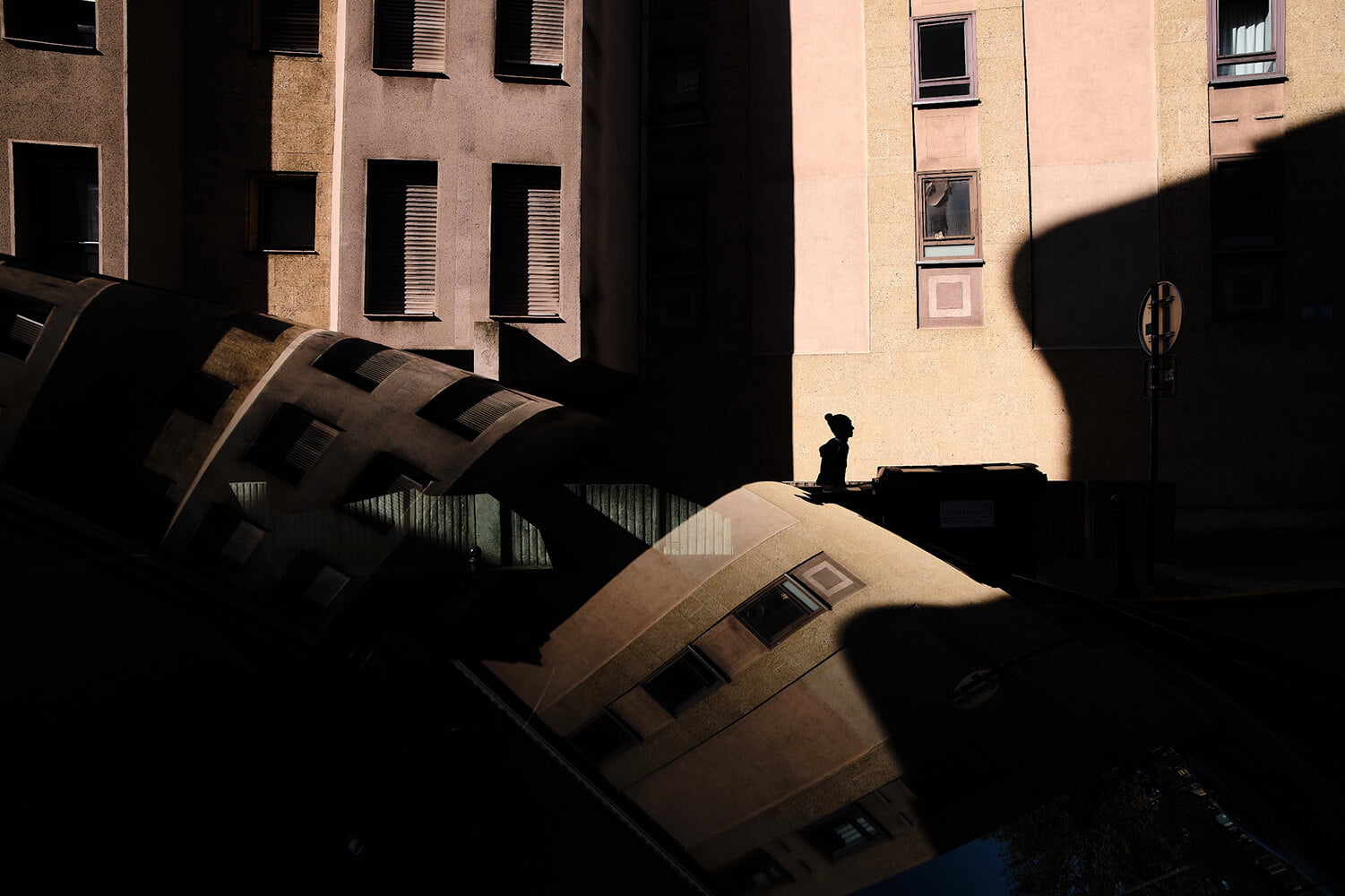
“Here a city dweller finds his or her way through an uninviting urban environment – a world of concrete and closed shutters. With wonderful lighting, a limited color palette and use of reflection, it has a strong graphic quality, eloquently describing the feeling of loneliness in the city.” – Martin Roemers
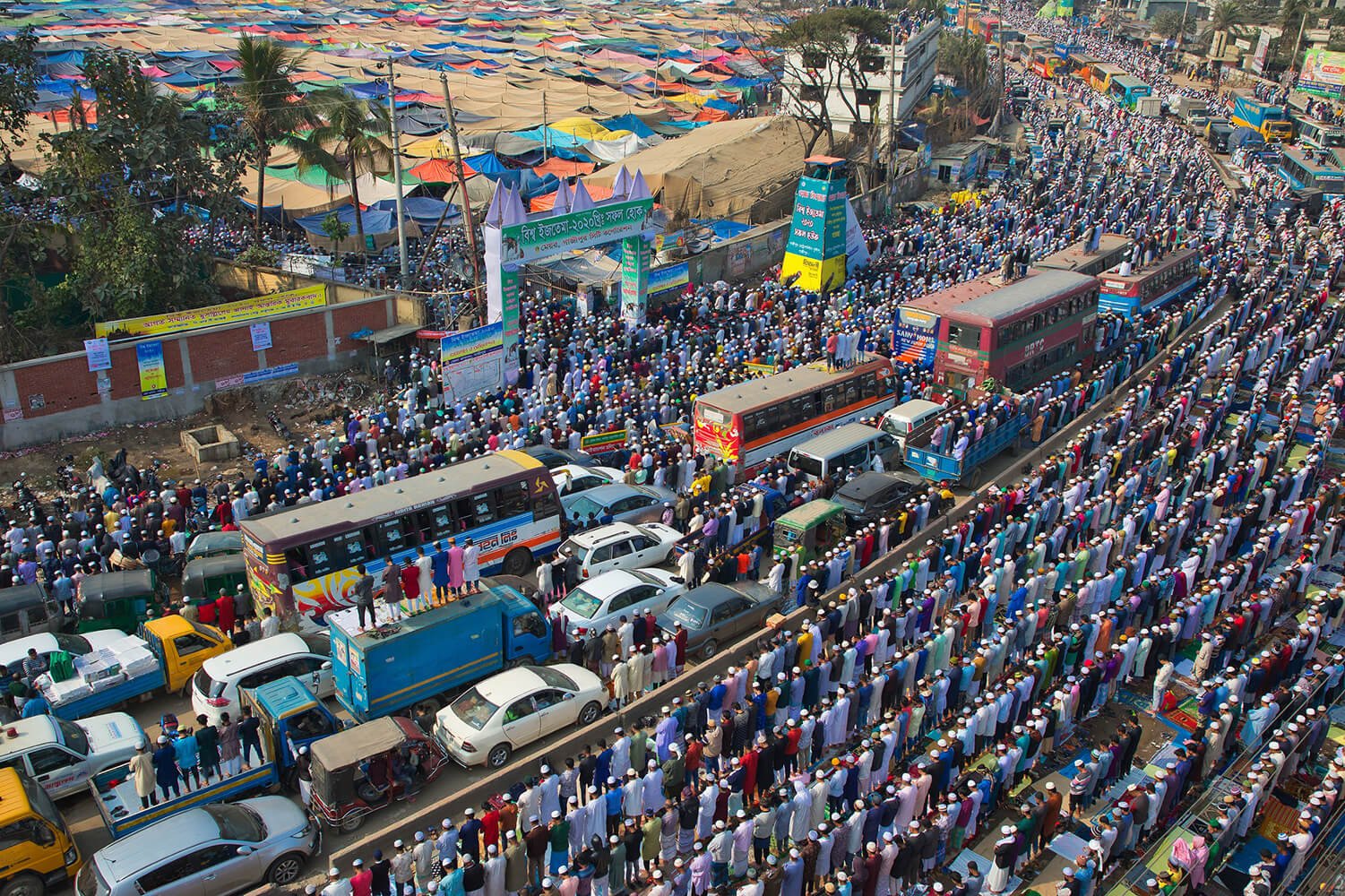
“What a remarkable scene. We see a city brought to standstill in prayer, thousands of devoted worshippers in orderly lines as if in stadium seating, stretching as far as the eye can see. It’s a feast of color and detail, and a powerful document of a huge communal event, capturing the immensity and awe of our belief systems, of a moment shared en masse.” – Life Framer
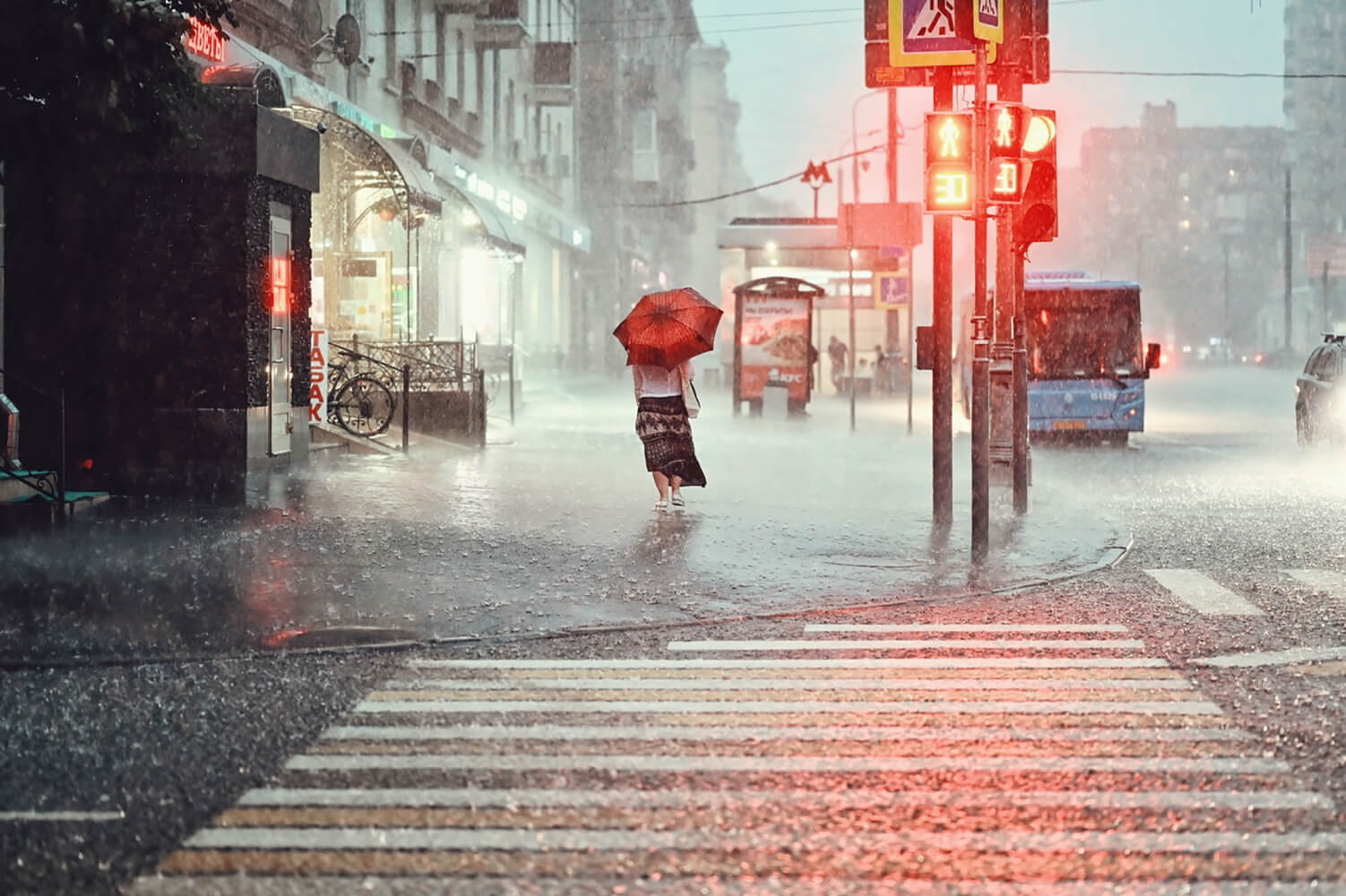
ANNA KAUNIS
“Bad weather makes for good photography! The assured framing, and a muted color palette of greys and neon red refracted by the downpour, gives this image a cinematic feel, the juxtaposition of inclement weather and seemingly carefree subject making for something atmospheric and engaging.” – Life Framer
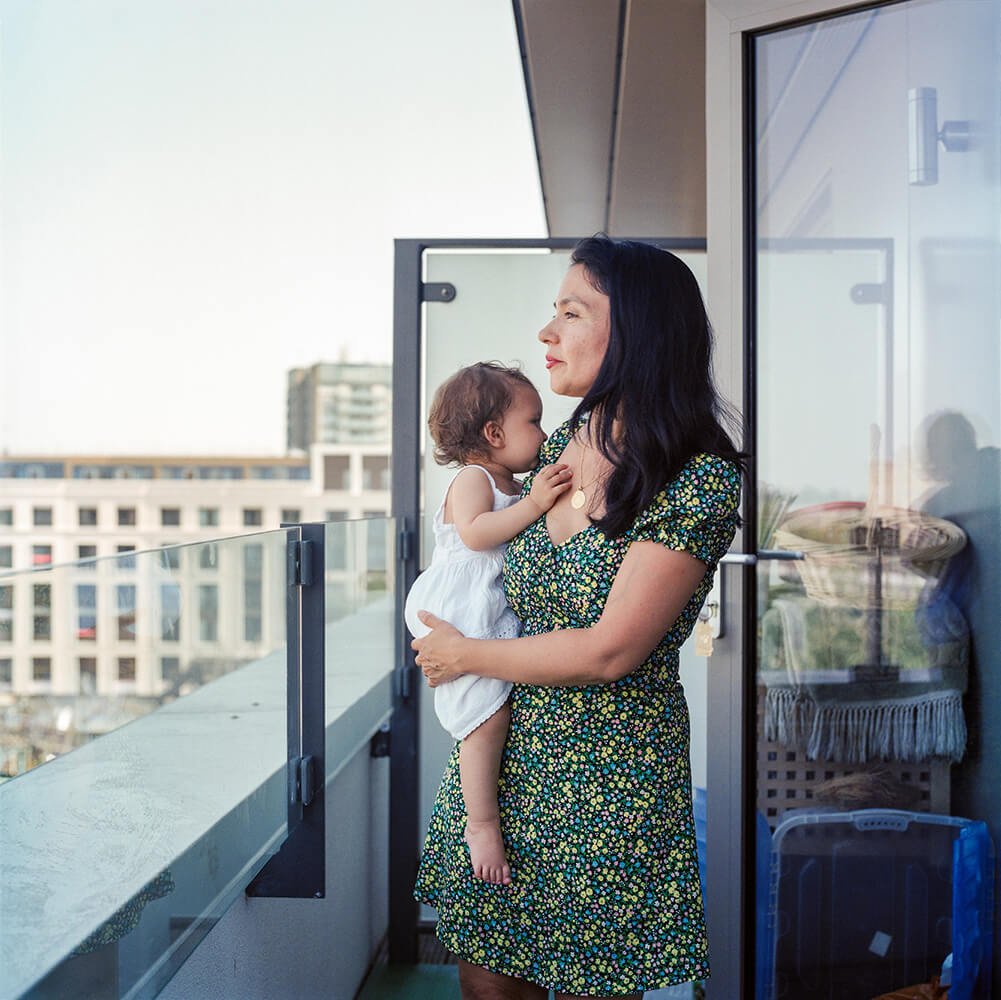
“Taken from a project that explores themes of community and change in the urban environment, this is a beautiful, sensitive portrait that evokes ideas of parenthood, legacy and purpose from the little pocket of the world that each of us inhabits.” – Life Framer
Photographer statement – From the series Wornington Word. “The Royal Borough of Kensington & Chelsea. Knightsbridge. Notting Hill. Property. Harrods. Money. Bourgeoisie. Rolls. Bentley. Chelsea Tractor. White & uptight. Rich. A series of stereotypes. A series of assumptions made. A series of images. Of great wealth; of London gentry, all suits and ball gowns; of the richest in society; of politicos and financiers; of big businessmen and banks; of embassies and Royalty. Wornington Word is about none of these. It is an alternative view of a complex, multi-layered place, as told by the residents who live there, and by reading between the lines of the propaganda of gentrification. In many ways a reflection of the broader trend across London, the project focuses on and celebrates the numerous overlapping communities that make up this diverse area, through the lens of a single housing estate in the midst of redevelopment.
Vanessa grew up on Wornington Green, and still regularly visits her mother on the estate (though they have recently been moved into one of the new builds): “In ’92 we moved over here to Murchison House. Well there was always a party, always a party at home, especially Murchison House. Lots of parties that my parents would organise, lots of salsa music, lots of delicious food, so yes lots of happy memories. Lots of Colombians being very loud.
There was a good community feel, very multi-cultural, especially on our floor. We had Moroccans, we had Vietnamese, we had Ethiopians, we had Africans, and us Colombians. So on our grounds, you know, you would walk down the corridor and you could smell lots of nice food from all around the world.””
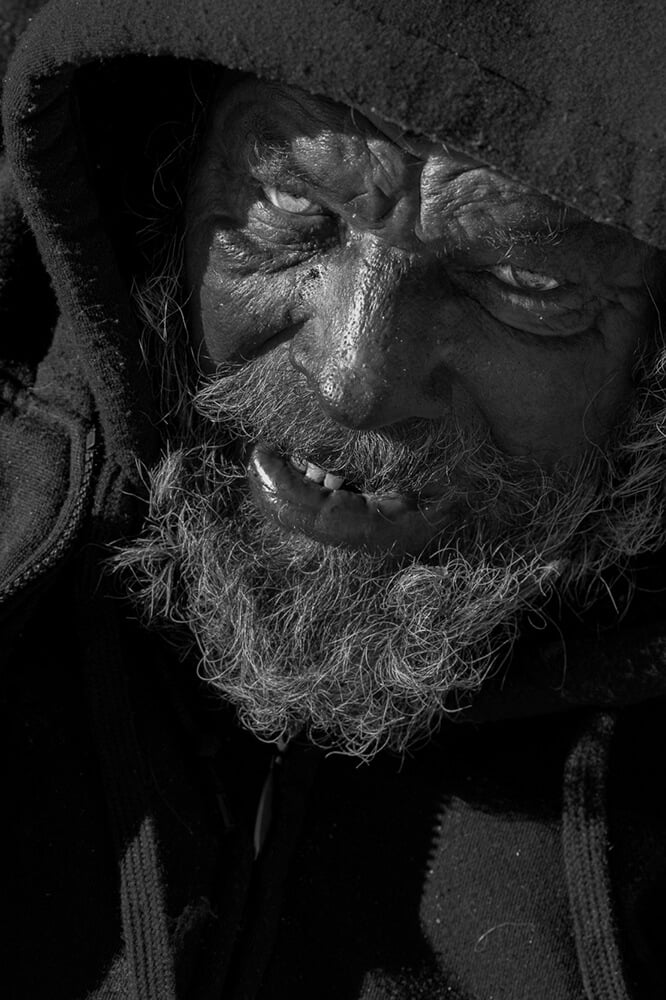
“While homelessness is a social issue worthy of all of our attention, photography of the homeless can be a tricky area, fraught with ethical questions that articles such as this describe. If done covertly, or without the weight of real purpose behind it, images of the homeless can feel shallow and exploitative. David avoids these pitfalls however, partly because of the advocacy behind the project, and partly because of the execution of his work. Taken with clear consent from the subject, and with tight, intimate framing and brilliantly handled lighting, the image has a stark intensity, celebrating this man as an individual – one undergoing hardship but with a character and voice worth hearing – rather than a faceless member of a monolithic group. It inspires empathy rather than otherness.” – Life Framer
Photographer statement – “The problem is homelessness – it cannot be solved unless we first understand that everyone must have access to a place called “Home”. Homelessness is a humanitarian crisis that was man-made, and it can be solved if we all choose to be part of the solution. I believe that safe, decent, and affordable housing is a human right, as written in the Universal Declaration of Human Rights, Article 25, Section One.”
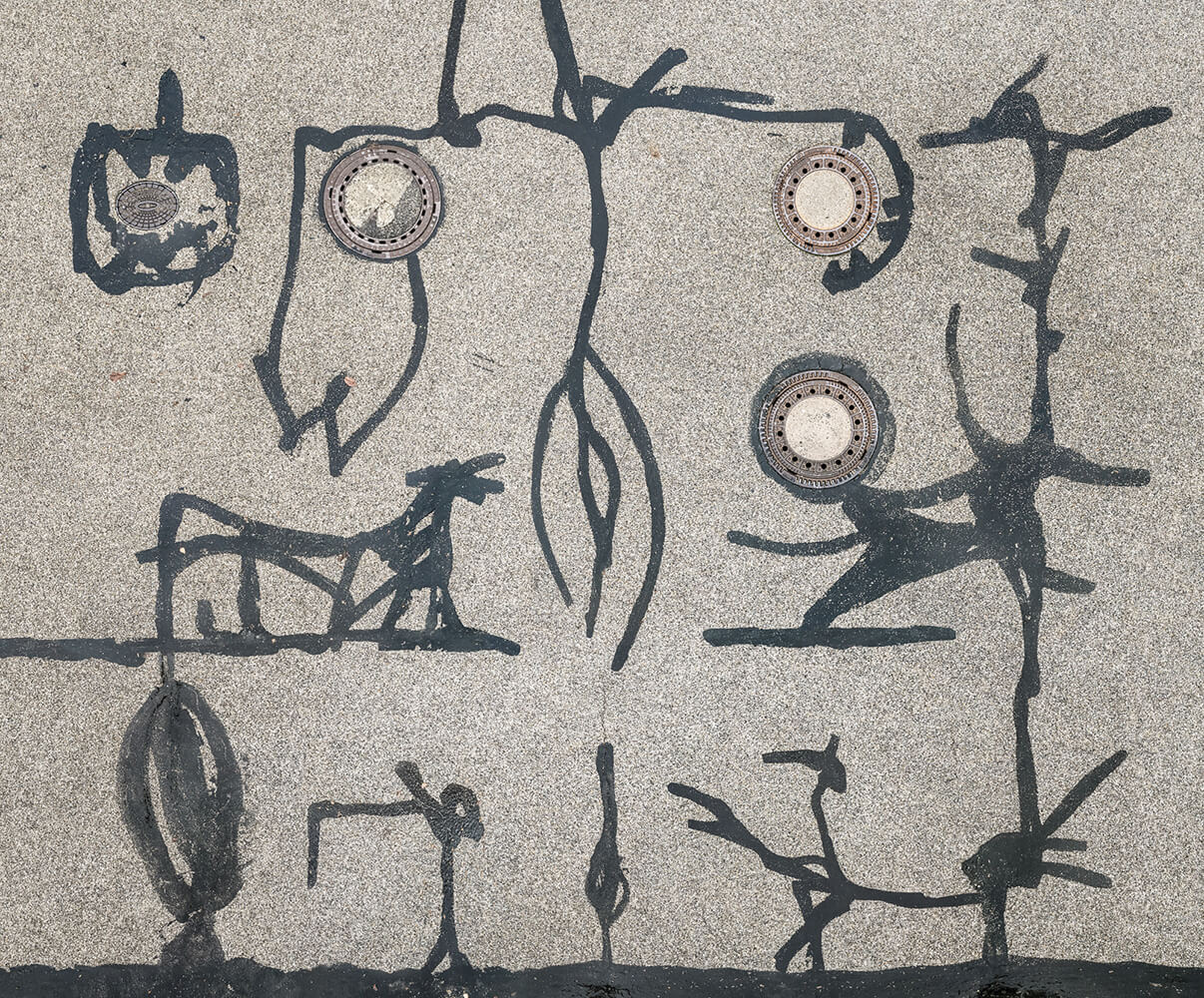
“A fantastic example of finding beauty and interest in a seemingly mundane subject matter, Stefan’s documentation of road repair works in Munich sparks the imagination. Instead of lines of tar repairing cracks, we see a horse, a running man, a bird taking flight… like the cave paintings of Lascaux or Magura, these scrawls are cultural reference points, and we are transported from the asphalt street to somewhere far more profound. These are the marks we now leave on the world, and with Stefan’s top-down, precise framing, they are presented as if to be studied by anthropologists or historians.” – Life Framer
Photographer statement – From the series Tar Trails. “These images show line-shaped repair work of asphalt cracks, from single motifs composed tar signs on the underground of the asphalt. Every street has its own micro climate, its own compound and thickness of the road surface, its own character of weathering and renovation. Each image shows the tar trails of one street in Munich, Germany.”
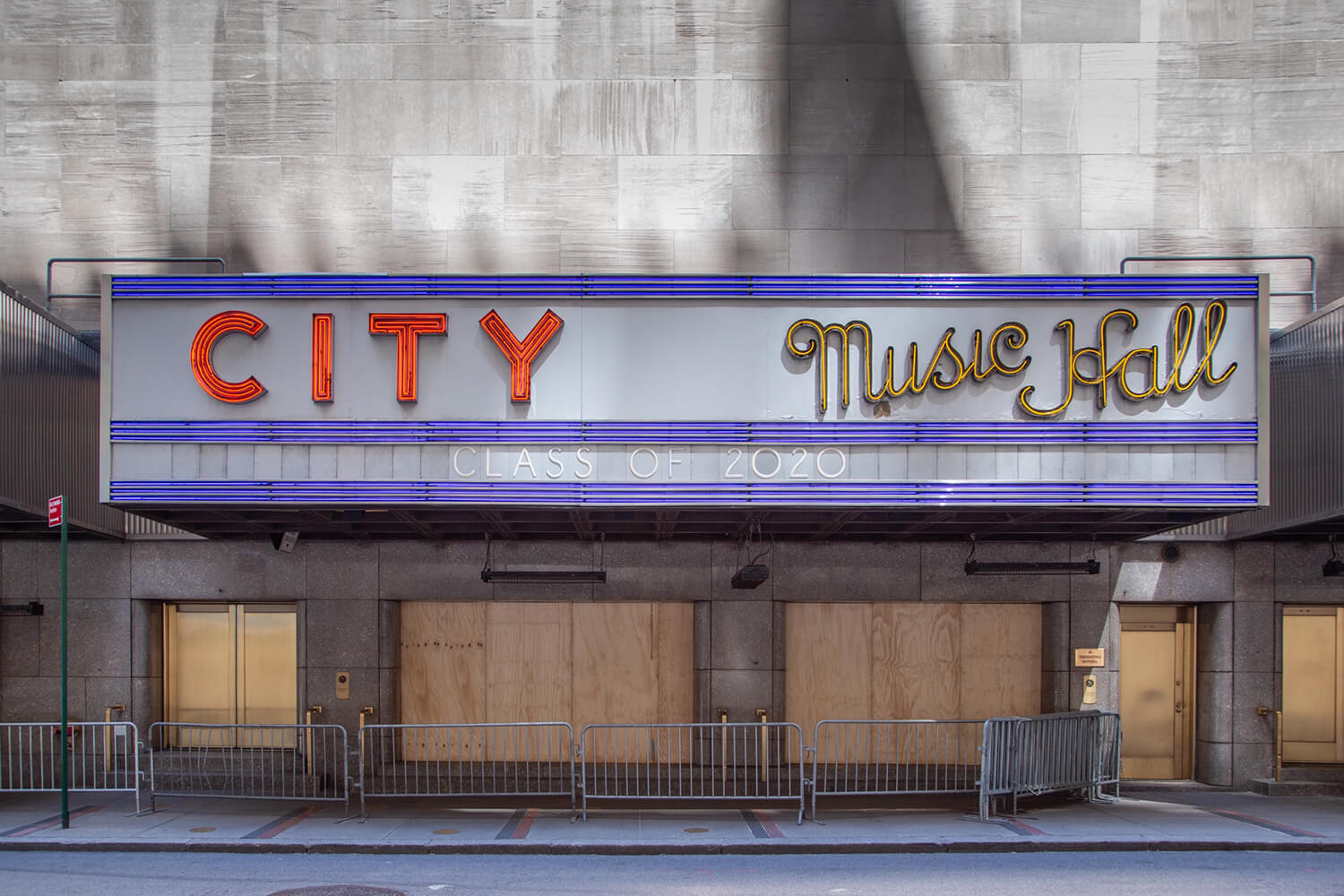
“An image defined by what we don’t see – a quiet emptiness where there should be hustle and bustle, this dramatic frontage boarded up in light of the Covid pandemic, and in anticipation of the protests that have defined this last 12 months. It’s an image that captures the zeitgeist, the prevailing mood of our urban world, and that says a lot with a little, captured with a sharp composition.” – Life Framer
Photographer statement – “The pandemic, the shutdown, the fear of economic crisis, the growing unemployment rate and the protests: the barricades became the new urban landscape, the expression of a unique historical moment. On March 20th, fashion stores in Soho are preparing themselves for the worst by barricading their shop windows, as they usually do before hurricanes. Stores on Fifth Avenue do the same. Covid-19 has hit New York: the statistics are dramatic, the city is deserted and no one can predict the timing for the reopening. At the end of May, with the protests following George Floyd’s death at the hands of the police, all businesses run for cover. Every storefront in Manhattan is boarded up. The city is unrecognizable. Between August and the end of October, many activities have reopened, but there are still countless barricades covering the shops that didn’t survive.”
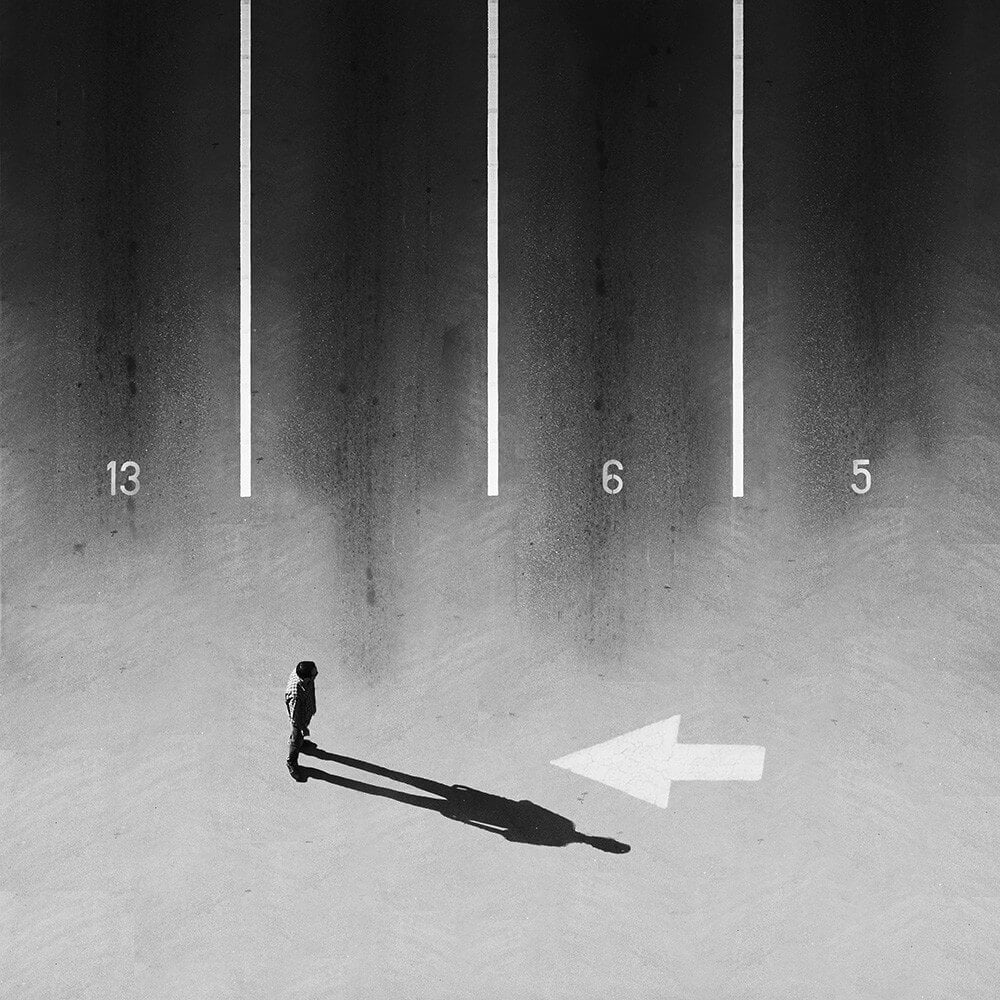
“With precise, minimalist framing and a well-executed chiaroscuro technique, Milad creates a flat, crisp scene of an anonymous figure in an unwelcoming environment, which through the obvious symbolism of lines and arrows evokes ideas of freedom and constraint, and insignificance against the immensity of the urban world. He boils down the elements into an almost graphic novel aesthetic, and the result is memorable for it.” – Life Framer
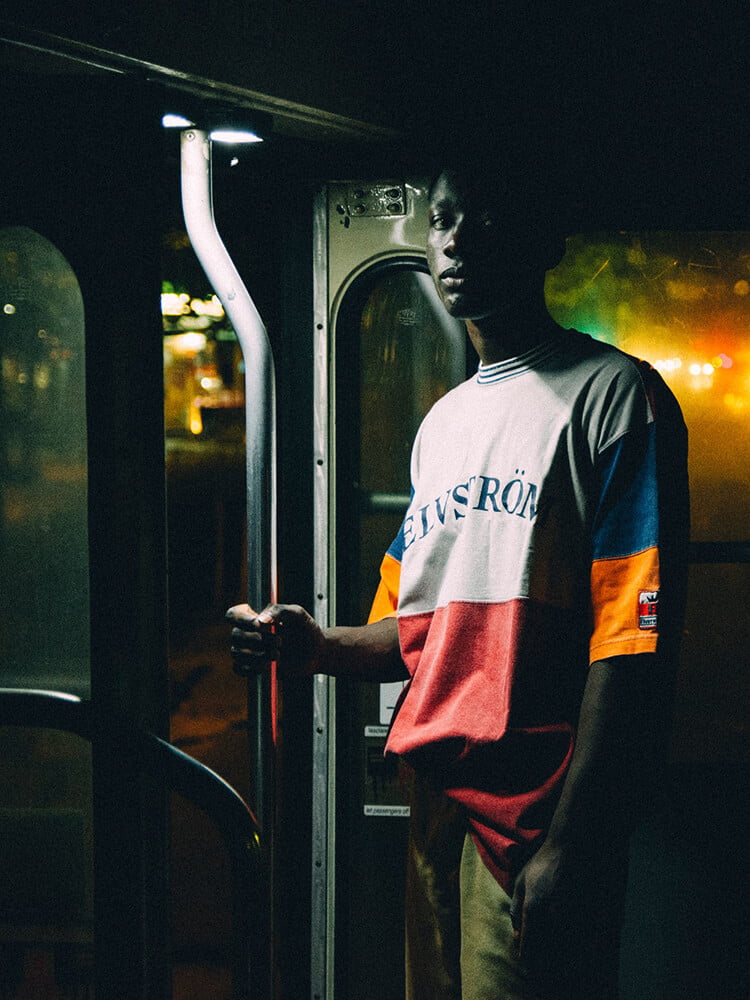
“Landing somewhere between fashion and documentary photography, Riccardo demonstrates exceptional use of light and shadow in capturing his subject, turning the familiarity of a bus journey into something compelling and memorable. The guarded and wary look from this man, engaging directly into the lens, perhaps touches on the experience of a young black man in the city.” – Life Framer
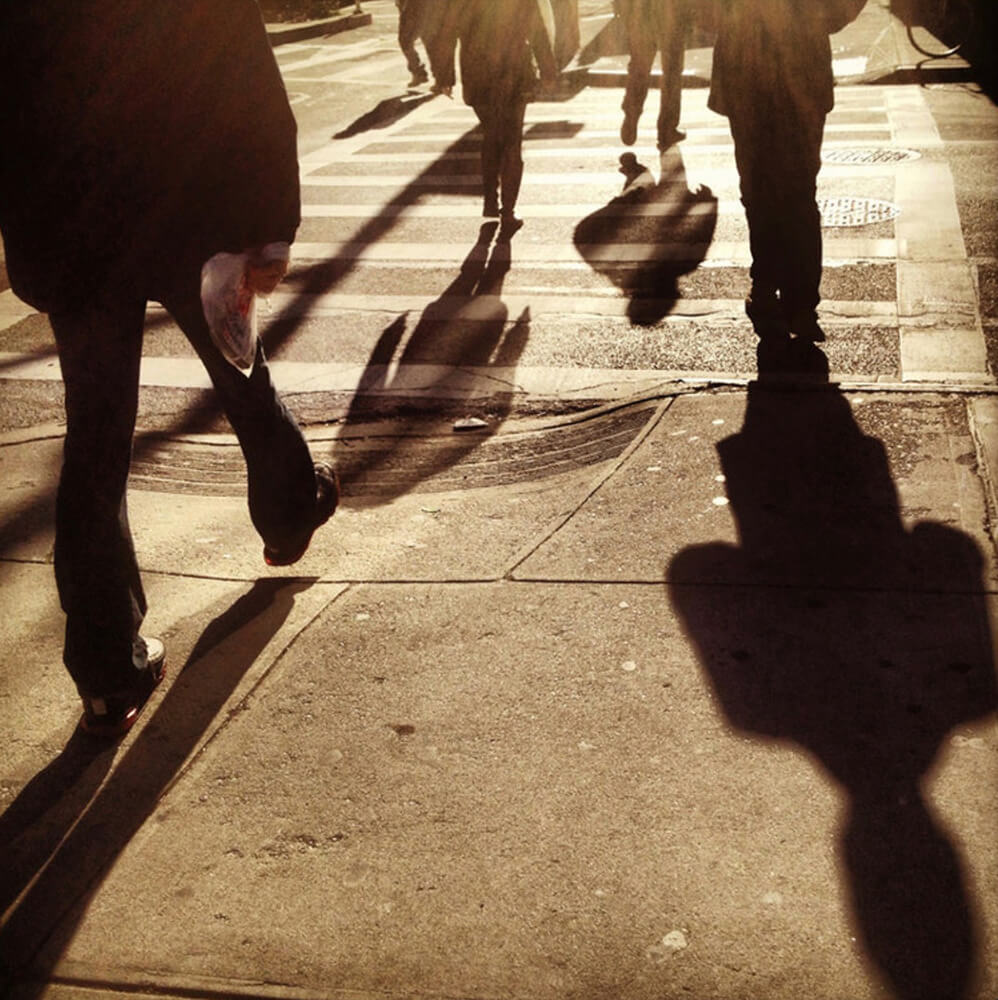
“An image not unlike one many of us will have taken, but Tanya finds something special – a simple magic in the quiet motion of anonymous people in the city, long shadows drawn in the golden hour light, and a reminder that we are just one in a near-infinite sea of people going about their urban lives.” – Life Framer
Photographer statement – “New York, NY, big city of dreams.”
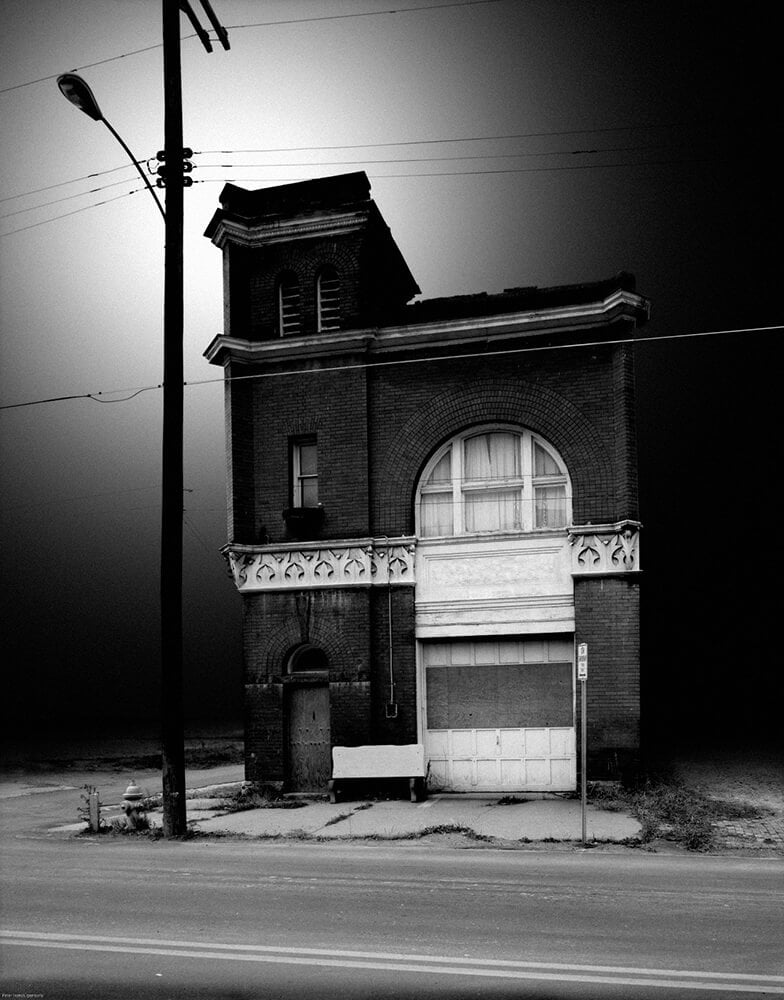
“The faultless execution of Peter’s digital collaging technique gives this image a strange, hyper-realness. Shot against the abyss of the night, this haunting building stands as a relic to the past, a last bastion of a certain time, soon to be knocked down one would imagine, in the endless cycle of urban renewal. It’s dramatic and inspires questions about space, time, and who might inhabit such a place. The history in the walls of the house.” – Life Framer
Photographer statement – From the series Lost Back to the Future. “These pictures represent the question of what remains of cities, what persists. Which buildings will still be spellbound in the future? Will man still admire the structure of old masonry stones when cars drive without wheels? When will the modern be recognized as a cultural legacy? What will remain from our here and now… light and shadow and the stories that will never change? Digital archived individual works found during a research on this topic served as a basis for the illustrated photographic collages. Material from their heydays transferred into the digital world. A game between analog and digital, one-time jump which creates a new surreal world and generates a look into a new reality. Thus, the shown space plays a role as a period of time as well as an optically experiential space that creates a stage for stories from the wise men of the past through the present into the future in which cars floating through the neighborhood and the noise of the street belongs to the past.”
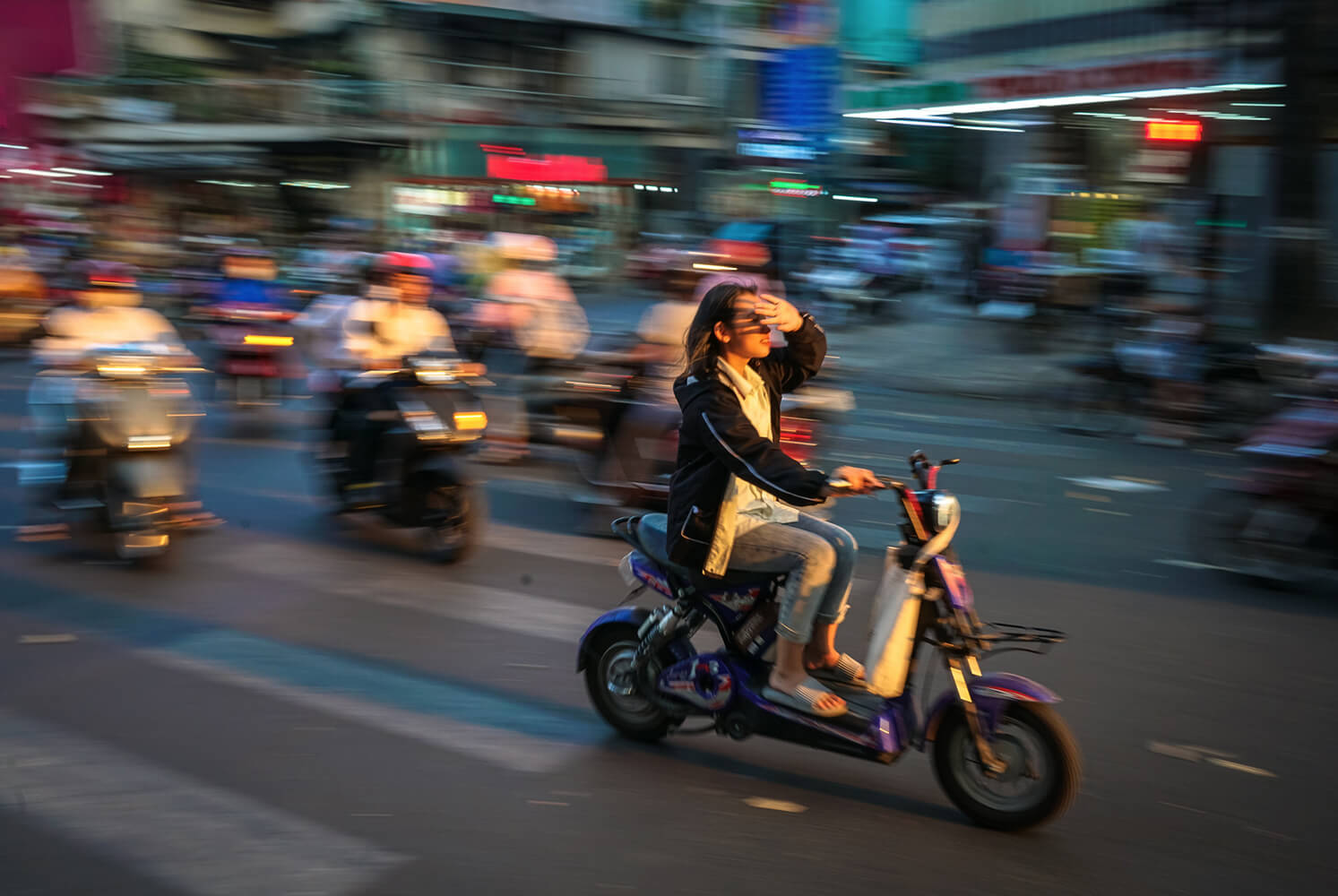
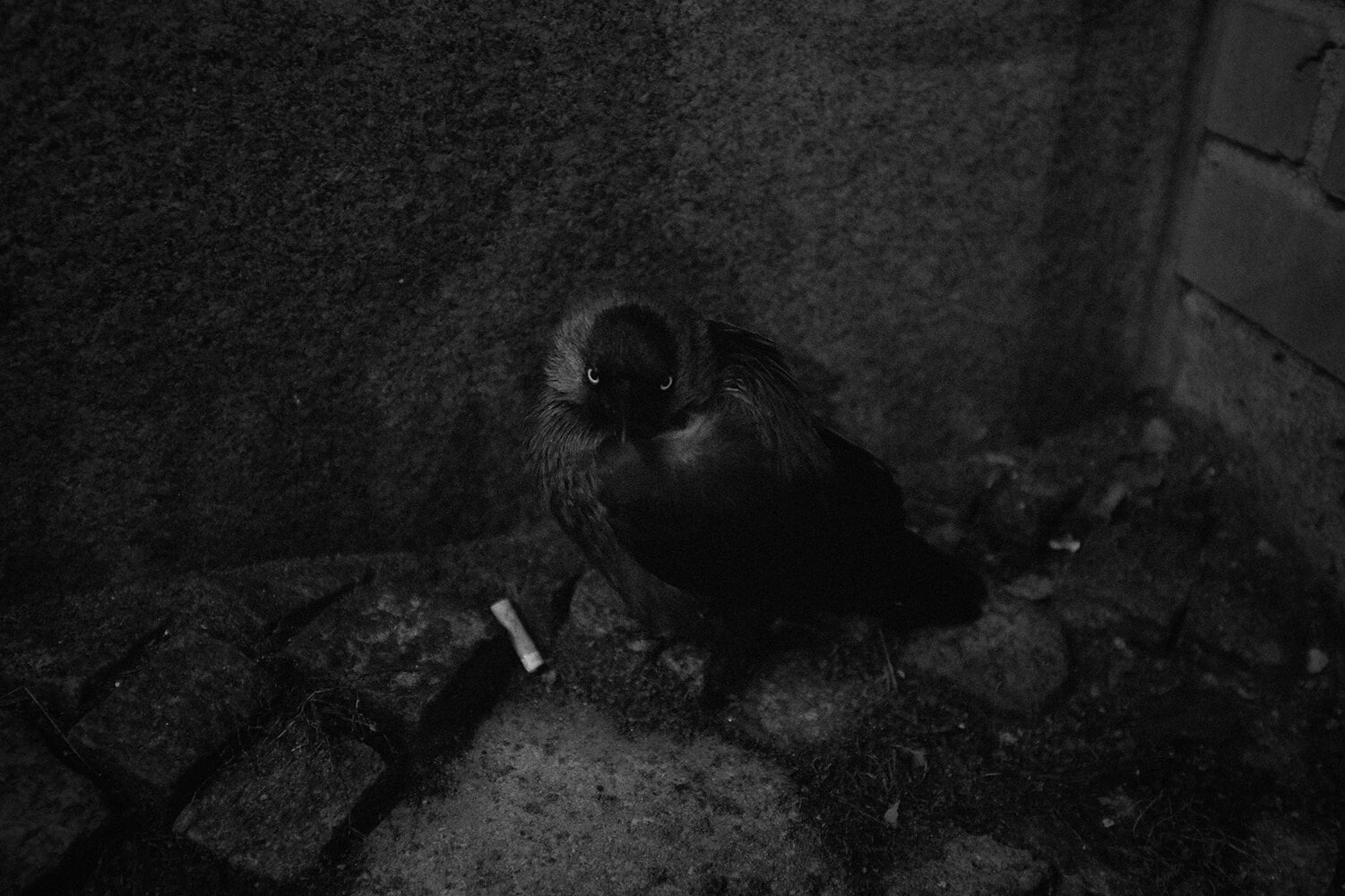
“This is an image that slowly reveals itself, the piercing half moon eyes of this concerned bird and the cigarette butt giving way to gloomy, menacing surroundings. It has a haunting intensity, describing an urban world that feels oppressive and unwelcoming, particularly for those species that share it with us, and that we so often seek to drive away.” – Life Framer
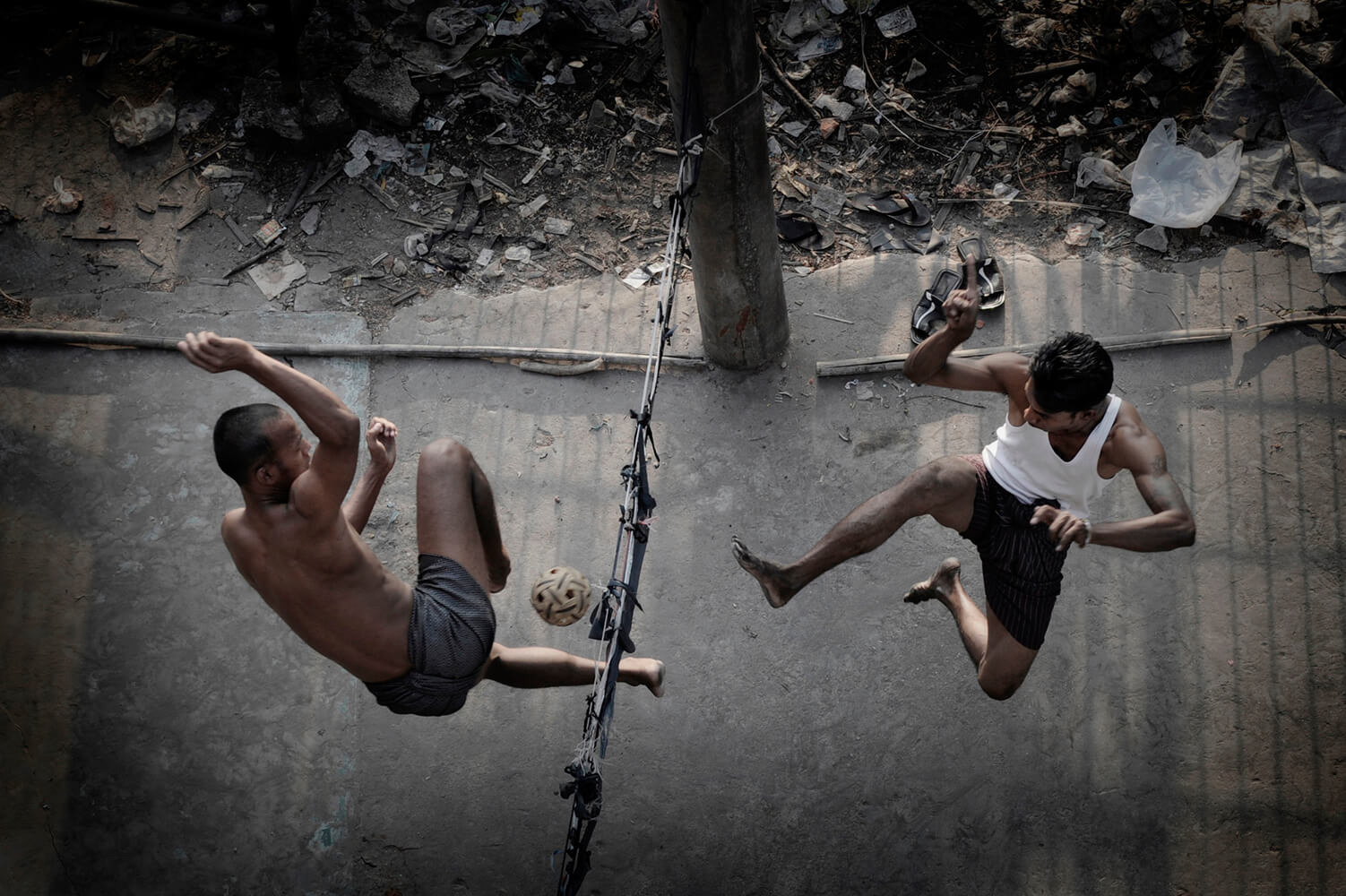
“The disorienting viewpoint that Pascal shoots from throws the viewer into the heart of the action of this game, emphasizing the athleticism of these two men leaping in a form of sporting combat. It’s immersive and exhilarating, and a powerful illustration of creativity and play in modest surroundings.” – Life Framer
Photographer statement – A lot is going on in the streets of Myanmar. Here is a game in which the opponents try to play the ball over a rope with their feet.
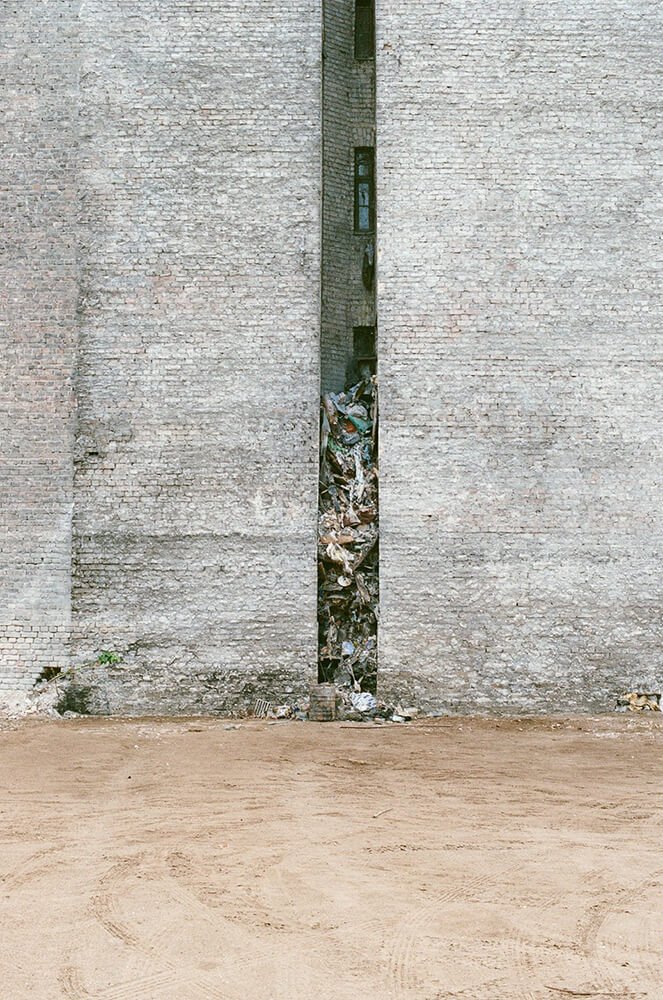
“Shot with a detachment and clear understanding of geometry, framing and negative space, Anete describes something overwhelmingly sad – how we fill our world with endless waste. There’s something slightly surreal – almost too weird to be true – about this small sliver of the urban world and the waste amassing in it, growing to block the windows like a slowly rising sea level that’s all too easy to ignore. It’s a depressing indictment of our endless need to generate and consume.” – Life Framer
Photographer statement – To look and to notice. There is a difference. These times have forced people to look inside their heads. Are they happy with where they are, what they’re doing? These times also required stepping away from other people, parties and busy streets. The city seems different. However, the human ‘footprints’ are still easy to spot.
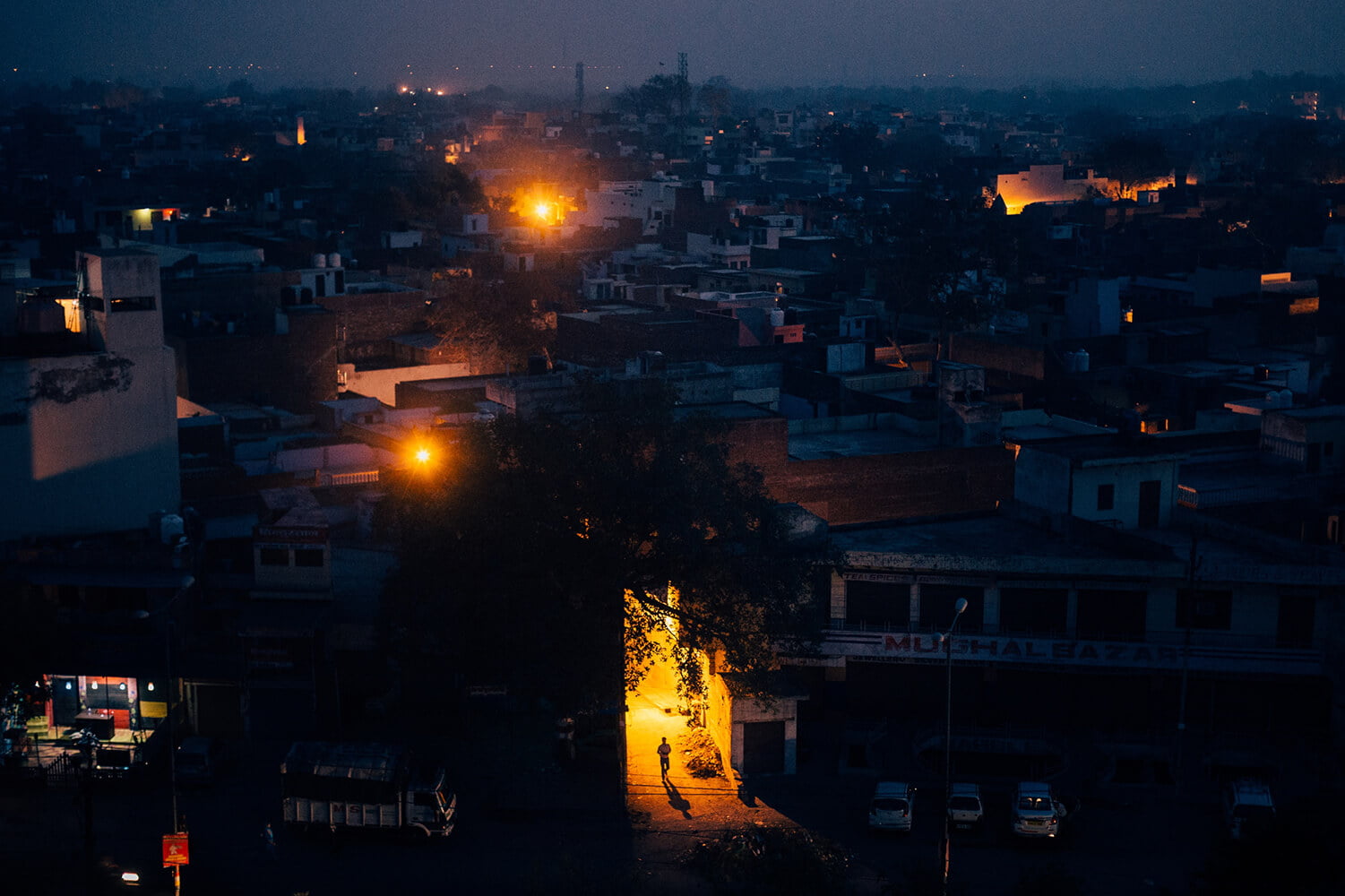
“Charnkurt’s use of complimentary colors of orange and blue, and a single silhouetted figure makes for something dramatic and arresting – a reminder of the enormity of our cities and the countless individual stories within them, weaving and intertwining in and endless dance. It’s a magical moment, captured with poise.” – Life Framer
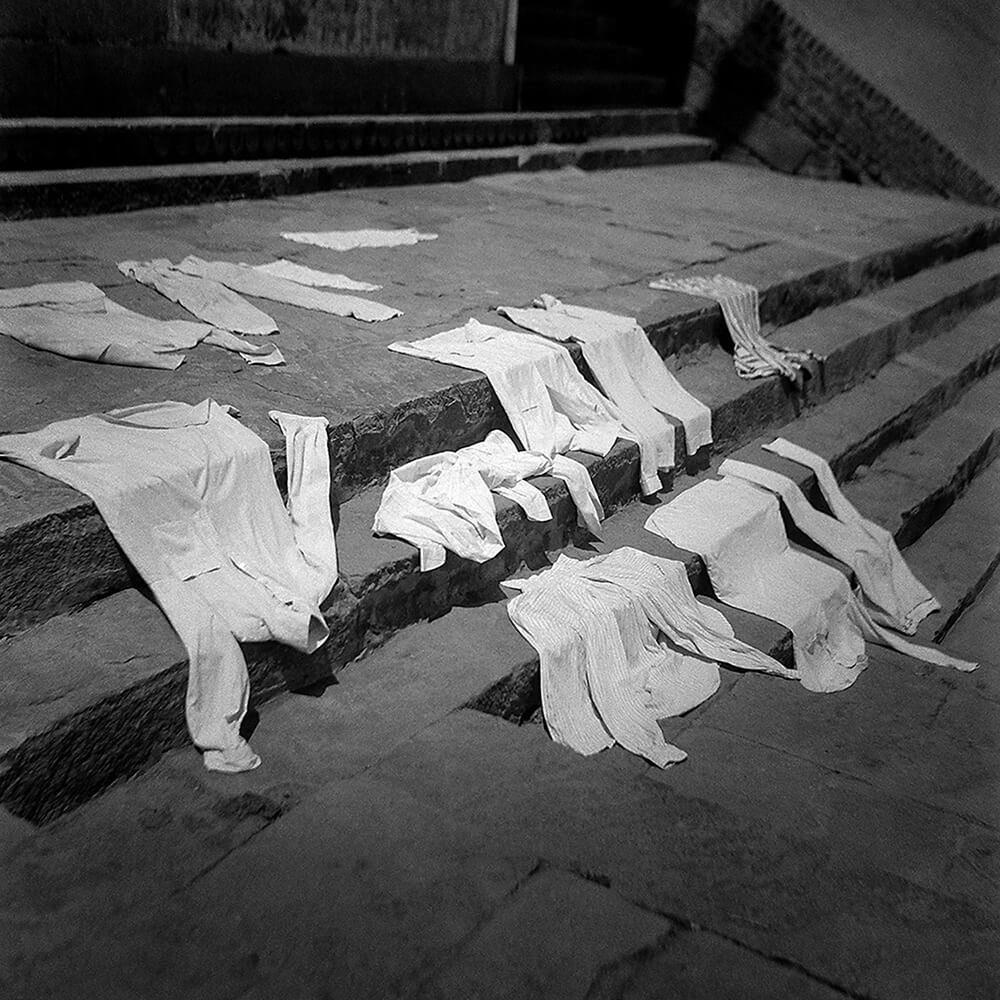
“Taken in a city known for its vibrant colors, Betina makes a wise decision to photograph in black and white. There’s something poetic in this simple daily ritual, clothes laid out like bodies to dry under the warm sun, shot with an intimacy and compelling individual voice.” – Life Framer
Photographer statement – From the series Varanasi. “Laundry drying on the ghats by the Ganges river, Varanasi. I had always wanted to travel to India, to the city of Varanasi in particular. I wanted to capture the people and the landscapes of a place rooted in ancient cultures and traditions. I was travelling alone which in one way made me more vulnerable, but at the same time, made meeting new people easier. Some encounters were so brief that not a single word spoken, but yet a connection was made and they became deep and meaningful, at times including spiritual sensations of peace and stillness. These moments of more intimate access enabled me to photograph the city and its people in personal ways, capturing moods, atmospheres and quiet private glimpses into day to day life where the past and present, eternity and continuity co-exist.”
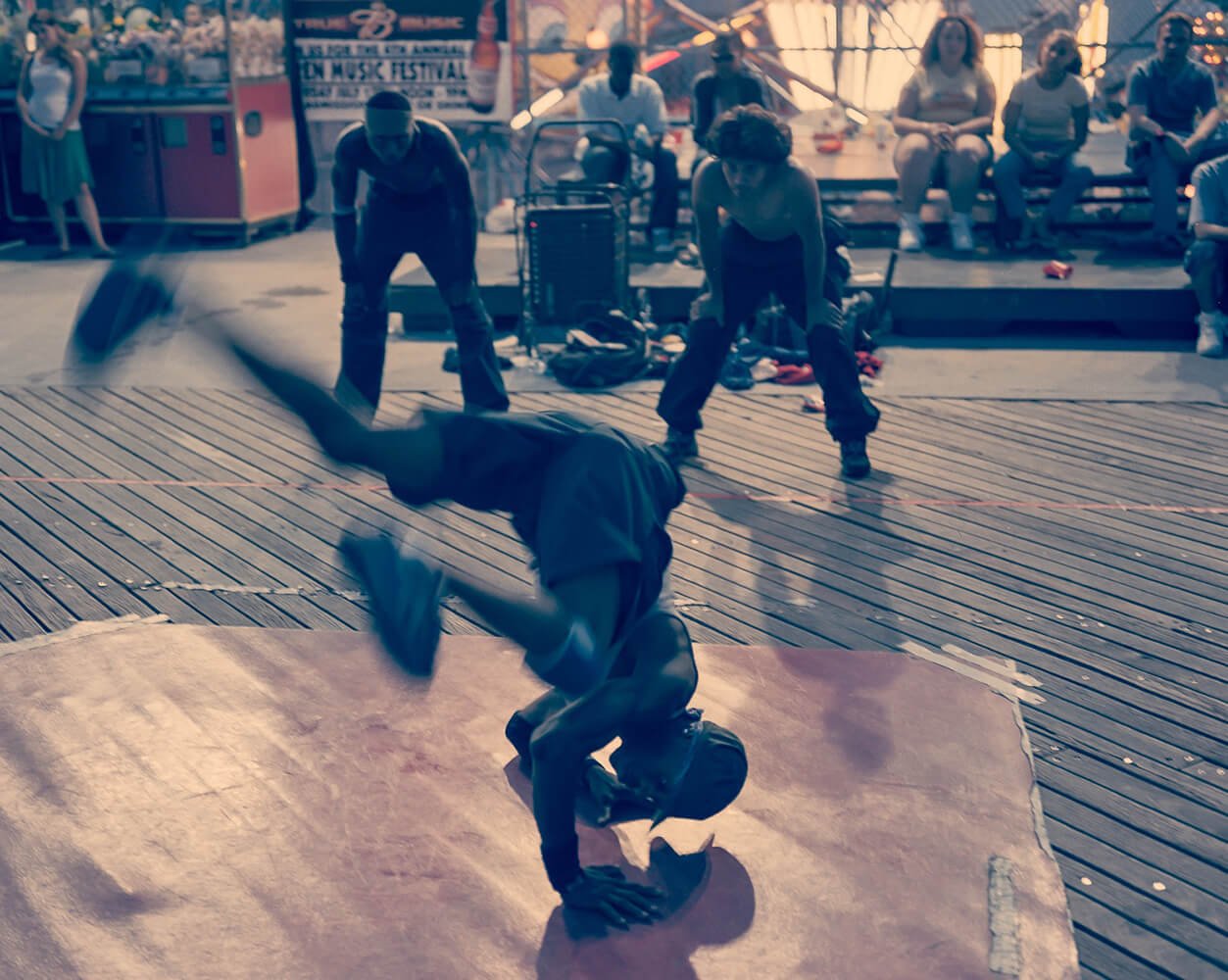
“Captured in strange, muted blue-ish tones, Lane freezes the energy and kinesis of a body in motion – a snapshot that has a real buzz to it, and that transports us to a more carefree time.” – Life Framer
Photographer statement – “Breakdancer during the Mermaid festival in Coney Island, Brooklyn, NY.”
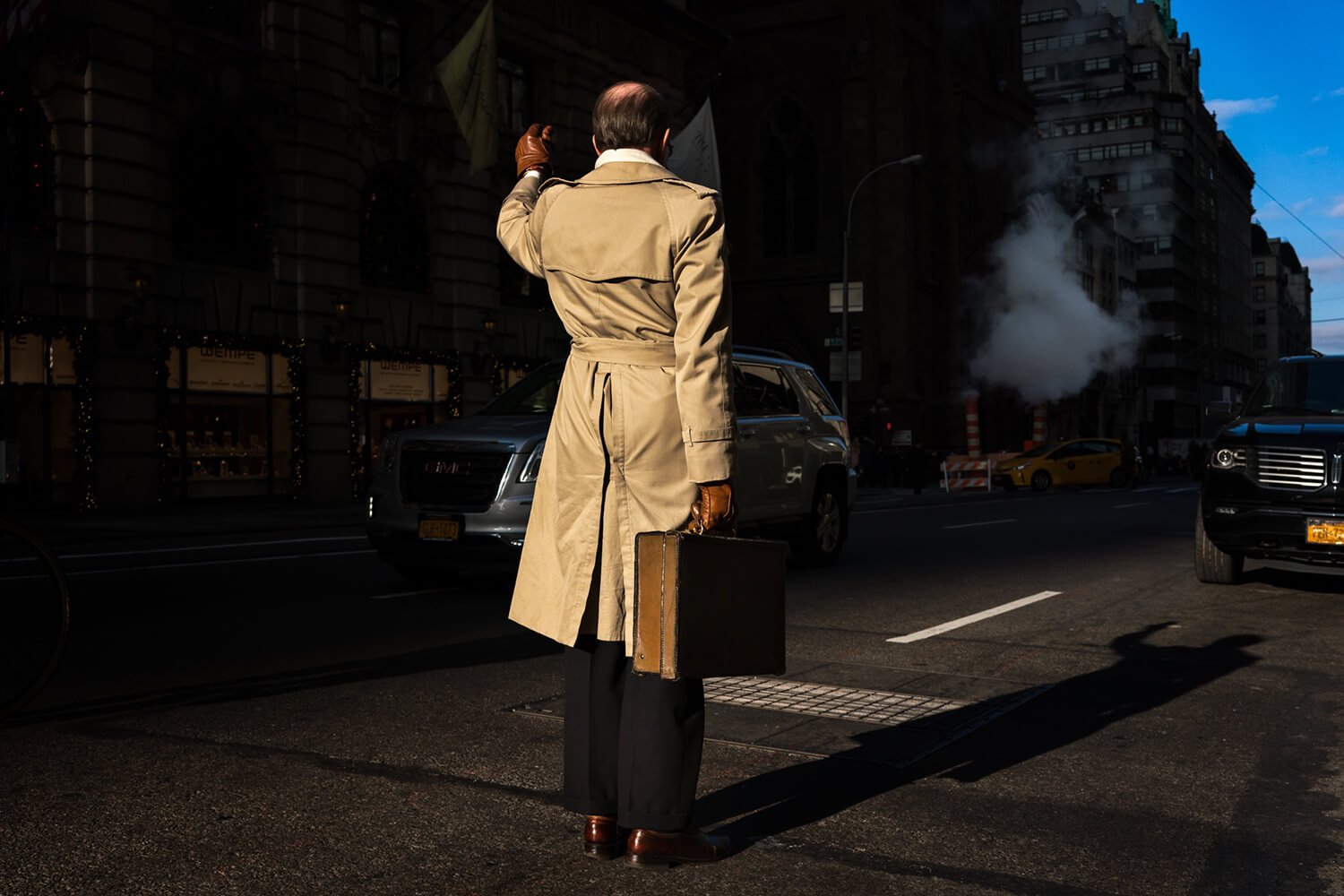
“A simple moment, which through the contrast of light and shadow from the low sun, creates a moment of stillness in the bustle and clamor of the city. B Jane photographs a mysterious subject – gloved and carrying a tattered briefcase of unknown contents – giving the image just a hint of something enigmatic, and adding a sense of narrative to a candid street scene.” – Life Framer